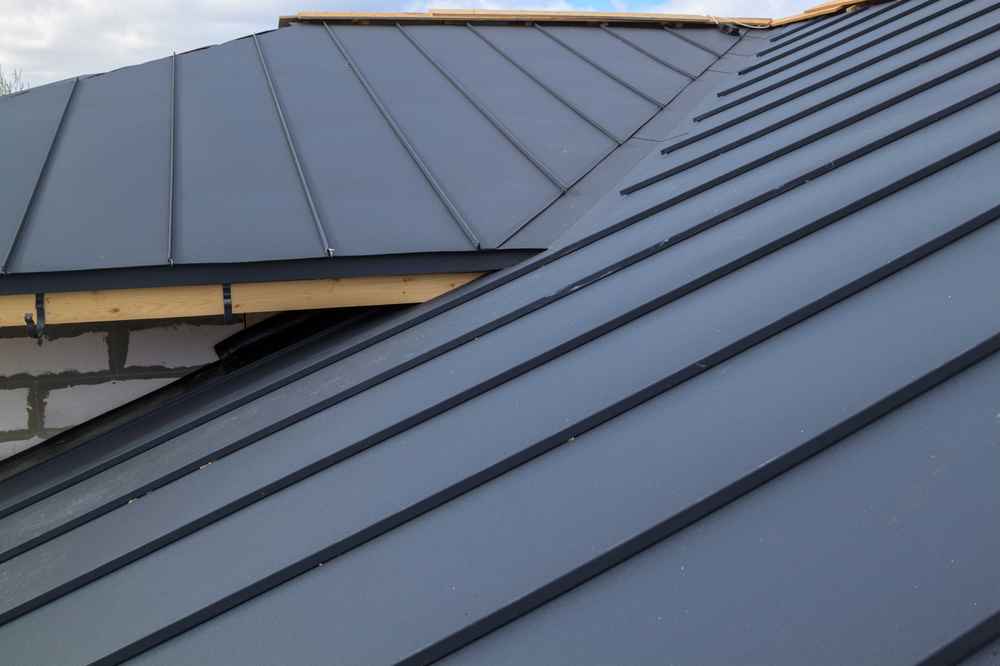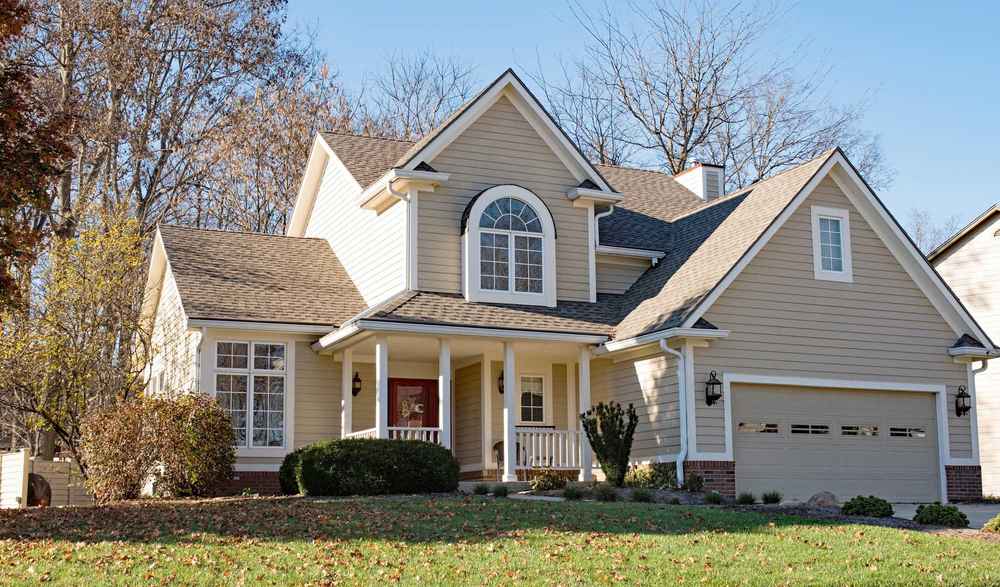Indiana summers bring soaring temperatures and relentless sunshine that can stress your home’s roof—making metal roofing summer performance more important than ever. By selecting a reflective roofing Indiana expert system, homeowners can reduce utility bills, stay comfortable, and protect their homes longer. Understanding Indiana metal roof temperature benefits helps you make a smarter roofing choice that keeps your home cooler and more energy efficient.
In this guide, we’ll dive into how metal roofs outperform other materials during hot months. You’ll learn about insulation, solar reflectance, real-world studies, and how these systems tackle kitchen-oven summer roofs. Stick with us for expert insight and local advice designed for Indiana homeowners.
How Metal Roofing Summer Performance Works
Reflective Surfaces Cut Sun’s Heat
Metal roofing surfaces bounce sunlight back instead of absorbing it. According to the U.S. Department of Energy, reflective roofing—also called cool roofs—can be 50°F cooler than traditional dark shingles on hot afternoons The Department of Energy’s Energy.gov. The high “solar reflectance” and strong “thermal emittance” help shed infrared heat before it transfers inside.
Ventilation Under the Panels
Indiana metal roof systems often feature standing seams installed over battens or strapping, creating an air channel beneath panels. Oak Ridge National Lab found this setup cuts attic heat flow by 45% and can reduce cooling costs by up to 25%. This air gap helps to vent trapped heat away during summer.

Real-World Impact: Indiana Metal Roof Temperature Drop
Lower Cooling Bills Made Simple
With reduced heat transfer, homes under reflective roofing Indiana systems require less power to stay cool. The DOE found reflective roofs can lower indoor peak temperatures by 2–6°F, cutting air conditioner runtime. In Indiana, where air conditioning accounts for a significant portion of energy use during summer, these savings quickly add up.
Energy Savings in Local Context
Studies from Oak Ridge show that metal roofs matched with proper ventilation and insulation reduce annual energy usage by 10–25% Earth911+1web.ornl.gov+1. For Indiana homes, this means less strain on HVAC systems, lower utility bills, and a smaller carbon footprint—all key wins during hot weather spells.
Reflective Roofing Indiana: Beyond Cooling
Fighting the Urban Heat Island
Reflective surfaces don’t just help individual homes—they improve local air quality by cooling the environment. The EPA reports that cool roofs reduce surrounding air temperatures, easing heat islands and cutting ozone and smog formation The Department of Energy’s Energy.gov+4US EPA+4Wikipedia+4. Your metal roof can benefit your whole neighborhood.
Extending Roof Life
By keeping roof surfaces cooler, reflective metal roofing reduces thermal expansion and UV damage—key factors that degrade materials over time. White or light-toned coatings used on metal roofs retain their reflectivity far longer than asphalt shingles. Studies show they can keep 95% of reflectance compared to dark-shingled roofs losing 20–40% over time.
Choosing the Right Metal Roof for Summer Performance
Coatings & Color Matter
Cool metal roofs rely on coatings that maximize solar reflectance and emissivity. PVDF-coated, ENERGY STAR™-qualified metal shingles meet the DOE’s cool roof criteria . Light colors like white, beige, or pale shades reflect more heat, while darker hues absorb more—so color choice directly affects cooling performance.
Profile and Installation Count
Standing seam panels tightly interlock and allow airflow, promoting superior metal roofing summer performance. When installed over strapping with attic vents, this profile optimizes thermal separation. Conversely, metal shingles without these features won’t perform as well in heat.
Comparing Metal to Asphalt in Indiana Summers
Asphalt Shingles Trap Heat
A dark shingle roof can heat to 150°F or more, while reflective metal panels stay 50°F cooler or more on sunny days . That extreme heat builds hot air in attics, stressing insulation and raising indoor temps—a recipe for high AC usage.
HVAC Wear and Tear
Heat infiltration means more runtime and strain on HVAC systems. In contrast, a cooler attic under a quality metal roof leads to smoother air conditioner functioning, fewer repairs, and a quieter home.
Lower Replacements Over Time
Metal roofs often last 50–70 years, or even a century with proper coatings and care. Replacing asphalt shingles 2–3 times during that period adds material and disposal costs—and fresh heat buildup. One metal roof can stay in place through decade after decade of Indiana summers.
Addressing Common Misconceptions
“My Roof Will Glow Like a Mirror”
Some think metal roofs will glare or blind neighbors. Modern coatings are matte or low-gloss, designed to reflect heat, not light. Homeowners get comfort benefits without dazzling glare.
“Metal Attracts Lightning”
That old myth is false. Metal is actually a poor anchor for lightning and provides less risk than combustible shingles .
“Metal Roofs Are Loud in Rain”
Properly installed with solid decking and insulation, metal roofs are no louder than asphalt, even during heavy rain or hail.
Additional Summer-Ready Options in Indiana
Radiant Barriers and Attic Ventilation
Radiant barriers beneath roof decking reflect heat into attic space and slow attic warming—complementing roof coatings . Adding ridge vents or powered attic fans further reduces indoor temperature gains.
White Coatings for Existing Running Roofs
Looking to upgrade without replacement? Field-tested cool coatings can slash rooftop temperatures by 30–35°C (~50–60°F) and extend shingle life. These coatings reflect heat, though caution is needed to avoid trapping moisture under shingles.
Indiana Case Study: Metal Roof in Summer Heat
Jake’s home in Indianapolis got a standing-seam cool metal roof in 2022. The reflective, light-gray panels combined with strapping and ridge ventilation reduced attic peak temperatures from 160°F to 110°F on 95°F days. As a result, his AC runtime dropped by about 20%, translating into $200–$250 annual HVAC savings—a real, data-backed payoff.
ROI and Incentives
Long-Term Savings
While metal roofs cost more upfront (typically $8–$14/sq ft installed vs. $3–$6 for asphalt), they save in energy, maintenance, and replacements. Plus, Indiana metal roof temperature control means lower AC use and longer HVAC life, adding up over many seasons.
Rebates & Tax Benefits
Metal cool roofs may qualify for rebates or LEED credits—especially in commercial or sustainable residential projects. ENERGY STAR and FEMP identify products that reduce heat islands; Indiana offers occasional utility rebates for cool roofing projects.

Is a Metal Roof Right for Your Indiana Home?
Ask yourself these questions:
- Are your summer energy bills high?
- Is your attic warmer than outside on hot days?
- Do you want a long-lasting roofing investment?
- Will improved aesthetics and performance add value?
If yes, then metal roofing summer performance delivers.Just ensure:
- Choose cool, reflective coatings
- Install with proper ventilation and insulation
- Trust certified installers like Gutapfel Roofing
- Maintain your roof regularly for peak reflectivity and function
Steps to a Cooler Metal Roof
- Schedule an on-site inspection to assess whether your attic and roof components need adjustments.
- Select a metal system with ENERGY STAR–rated coatings for superior reflectance.
- Plan installation with ventilation like battens, ridge vents, and insulation upgrades.
- Consider radiant barriers or cool coatings for additional heat control.
- Keep your roof clean—dirt and debris lower reflectance over time.
Make Summers Cooler with Gutapfel Roofing
Indiana summers don’t have to mean sweltering homes and high cooling bills. With a properly installed reflective metal roof, you can enjoy:
- Cooler attic and living spaces
- Reduced energy consumption
- A roof built to last decades
- Peace of mind from a trusted local roofer
As Indiana metal roof temperature experts, Gutapfel Roofing designs systems that turn summer heat into comfort and savings. Get a free estimate now and start building a cooler, more efficient home with reflective metal roofing installed right.



